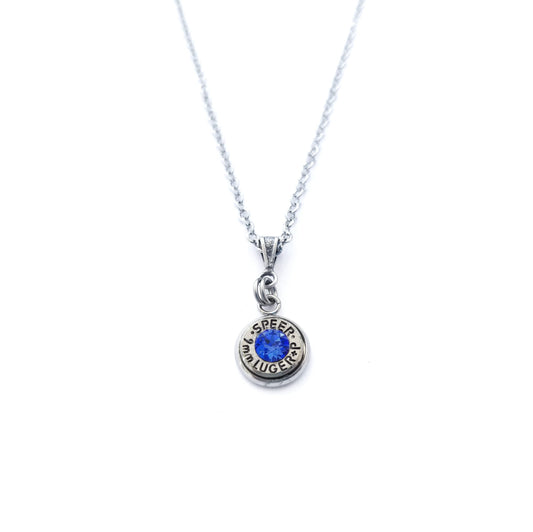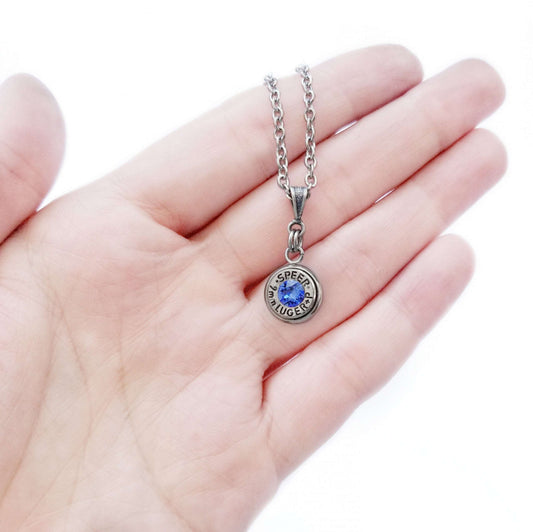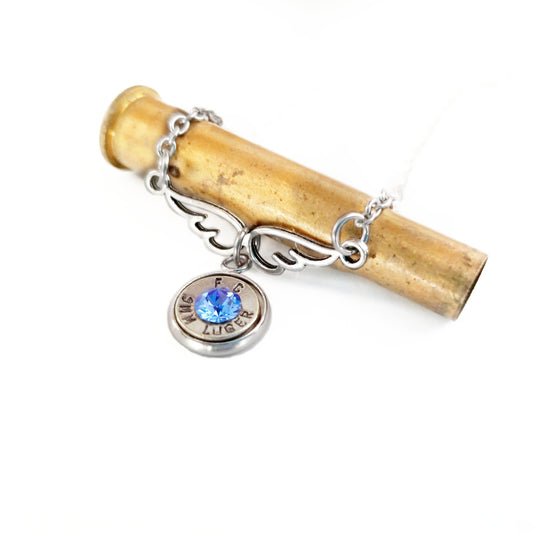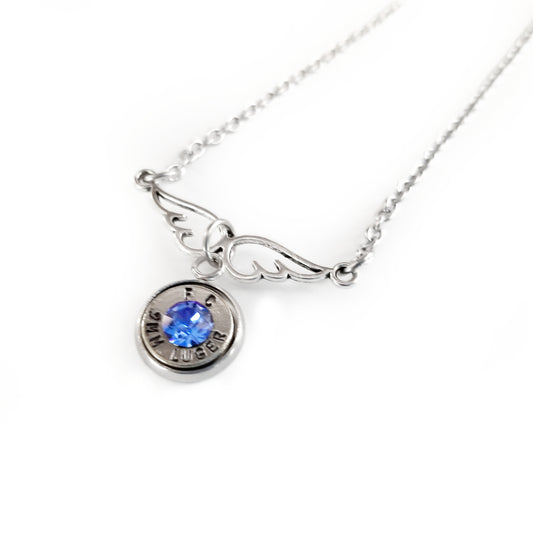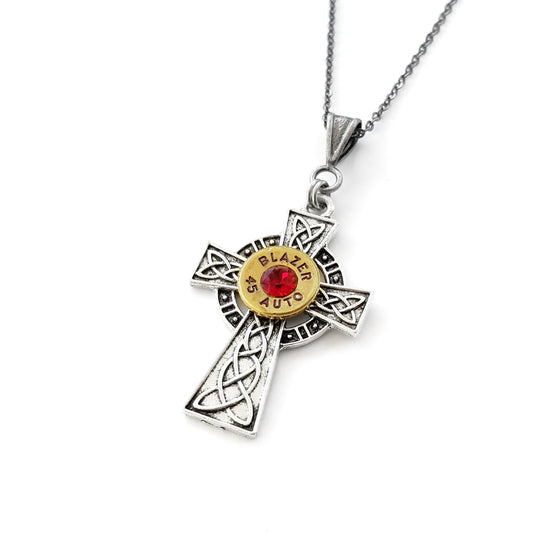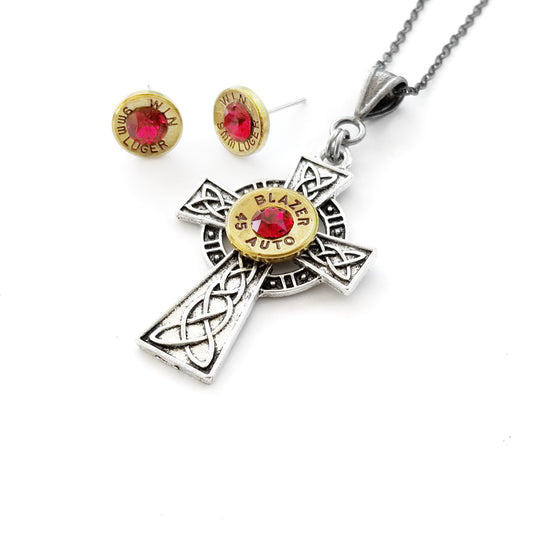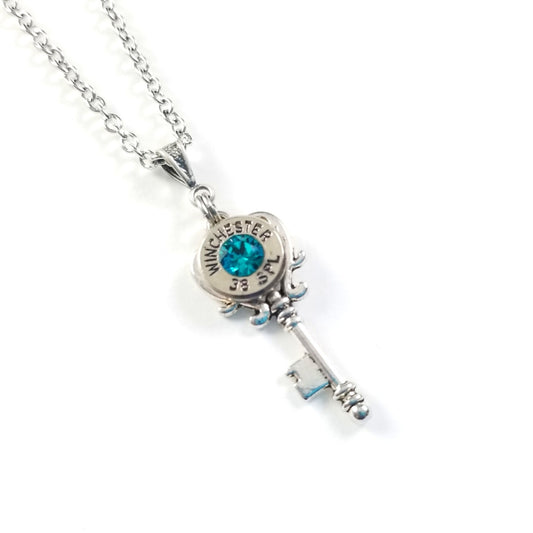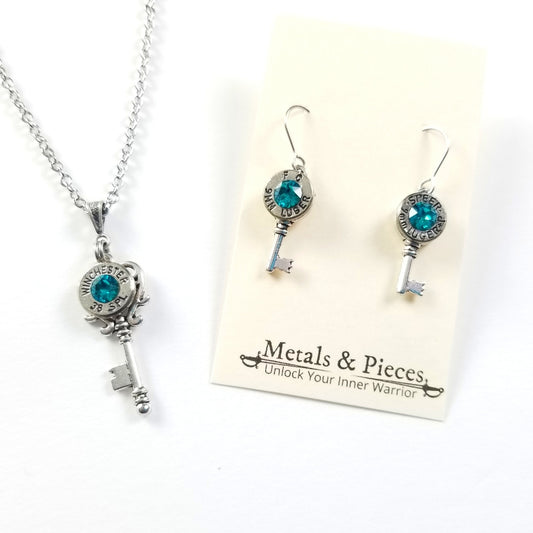
A Brief History of Bullet Jewelry (and Why It Still Matters)
Share
It started in the trenches. It still belongs in your hands.
Before bullet jewelry became a product you could click and ship, it was something else entirely.
It was a keepsake, a secret, a scar.
A casing pocketed from the battlefield, pressed into a palm, and carried home because someone didn’t.
It was a moment—smoky, deafening, visceral—preserved in brass, cut down and threaded into something wearable, something small enough to carry the weight.
It wasn’t fashion.
It was memory.
And for a long time, it was deeply, fiercely personal.
The First Pieces Were Never for Sale

Picture this: It’s 1917. Somewhere in the mud and fog of France, a young man in a wool uniform slips a spent casing into his pocket after a firefight. He doesn’t say why. Maybe it was fear. Maybe it was grief. Maybe it was a promise.
Back at camp, he carves initials into the base with the tip of a knife. Threads it on a cord. Wears it under his collar for the rest of the war.
He’ll come home with nothing but that. His boots, his silence, and a casing that once meant death—now meaning survival.
They called it trench art.
We call it a beginning.
From War to Wilderness

After the wars, casings came back across the ocean and took on new life.
On frontier farms, ranchers turned what was left on the ground into something they could use. A casing became a zipper pull. A bolo. A tie pin. Something to pass the time on long nights and long rides.
It was the West’s version of a signature.
Not a monogram, but a message: I’ve fired. I’ve worked. I’ve earned.
The jewelry wasn’t polished. It was practical.
It didn’t sparkle. It had weight.
It wasn’t about aggression—it was about presence. About carrying your own story close and visible.
And in places where there weren’t many words spoken, that meant everything.
When the Counterculture Reclaimed It

Fast forward to the '70s.
Young people in denim jackets and combat boots start wearing spent casings not for heritage, but for heat. A statement.
Some wore them as anti-war. Others as a badge of defiance.
You’d see a bullet casing threaded onto leather cord, safety pinned through a collar, soldered onto rings and belt loops. Gritty, raw, and deliberately unpolished.
It said:
“I’m not here to be pretty. I’m here to be real.”
And through all of this, the meaning never disappeared.
It evolved.
From soldier to cowboy to protester—each one using bullet jewelry to say something the world wasn’t ready to hear out loud.
Why It Still Matters Now

Because we are still wearing things we’ve survived.
Because what we’ve carried shapes what we wear.
Today, bullet jewelry doesn’t sit in a box for special occasions. It sits on collarbones, on wrists, in second earlobes, right next to the scars.
For some women, it’s a nod to a father or grandfather who served.
For others, it’s survival after cancer, after divorce, after loss.
For more than a few, it’s about knowing how to shoot and choosing when to be silent.
And for all of them, it’s the same truth:
"I don’t need permission to be powerful. And I don’t need to explain it, either."
The Story in the Metal
At Metals & Pieces, we didn’t set out to make trendy jewelry. We didn’t need to reinvent the casing.
We needed to do what women have done for generations: refine it.
We take real, fired bullet casings—cleaned, cut, lathed down to their head stamps.
We darken the lettering so the story shows up clear.
Sometimes we set crystals. Sometimes we don’t.
We use stainless steel, nickel-free alloy, and we weave in Celtic motifs when a piece calls for something older, something deeper.
We don’t erase what it used to be.
We just remind it that it can be something more.
Because if the brass can survive fire,
so can you.
From the Trenches to Your Hands

If you’ve ever picked up a piece of brass from the ground, you know how small it feels in your hand—and how heavy it feels in your chest.
You can feel the tension in it. The past use. The sudden silence.
That’s why we don’t make bullet jewelry to be loud. We make it to be felt.
You don’t need to look tactical. You don’t need to make a statement.
You just need to carry a little bit of truth.
And when someone notices it and asks,
“Is that a bullet?”
You’ll smile.
Because you know what it really is.
Why Bullet Jewelry Keeps Coming Back
Because it tells a story that never ends:
-
A father who taught you to shoot
-
A partner who deployed
-
A version of yourself that didn’t give up
-
A season that tried to break you
-
A win that no one clapped for but you
You could keep all that tucked away.
Or you could carry it with style, grace, and a little edge.
The Difference Now
There are plenty of places to buy novelty bullet jewelry.
Keychains. Pins. Accessories with fake shells glued on.
That’s not us.
We make jewelry with backbone—designed to be:
-
Incognito, not aggressive
-
Elegant, not costume
-
Purpose-built, not mass-produced
Because you’re not a gimmick.
You’re a woman who’s survived something.
And now you wear what matters.
Want to Carry the Legacy Forward?
If this feels familiar—if this feels like you—you’re not alone.
You’re part of the reason bullet jewelry didn’t fade out when the trench coats, bolo ties, and protest boots came off.
You’re the next link in the chain.
Explore the collection, and wear the story your way.

